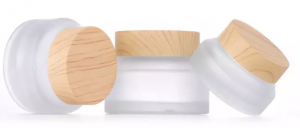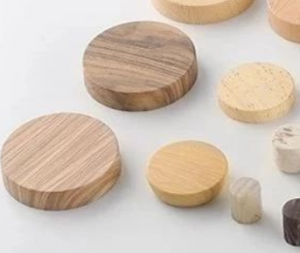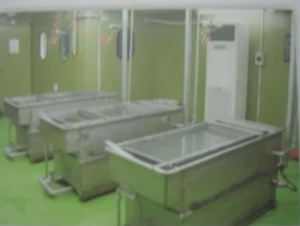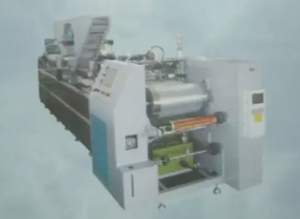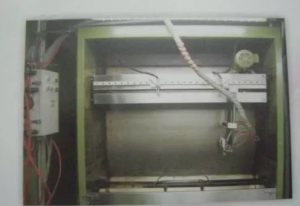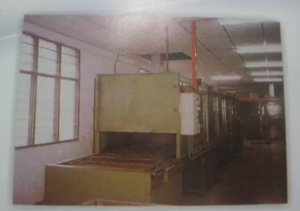With the development of the economy, the improvement of people’s living standards, and the continuous improvement of consumers’ consumption concepts, tailor-made personalized products are increasingly favored by consumers. Personality transfer completely meets the consumer needs of modern people. Some special products cannot be printed by traditional printing methods, but can be printed on almost any complex surface by water transfer printing. This article is edited by shanghai rainbow package for your reference.
Water transfer
Water transfer printing technology is a kind of printing that uses water pressure to hydrolyze the transfer paper/plastic film with color patterns. As people’s requirements for product packaging and decoration increase, the use of water transfer printing has become more and more extensive. The principle of indirect printing and perfect printing effect have solved many problems of product surface decoration.
01 Classification
There are two types of water transfer technology, one is water mark transfer technology, and the other is water coating transfer technology.
The former mainly completes the transfer of text and pictorial patterns, while the latter tends to perform a complete transfer on the entire product surface. The overlay transfer technology uses a water-soluble film that is easily soluble in water to carry images and texts. Because the water coating film has excellent tension, it is easy to wrap around the surface of the product to form a graphic layer, and the surface of the product has a completely different appearance like spray paint. It can be coated on workpieces of any shape to solve the problem of three-dimensional product printing for manufacturers. The curved surface covering can also add different textures on the surface of the product, such as leather texture, wood texture, jade texture and marble texture, etc., and it can also avoid the vacant positions that often appear in general layout printing. And in the printing process, since the product surface does not need to be in contact with the printing film, damage to the product surface and its integrity can be avoided.
Water transfer is a special chemically treated film. After printing the required color lines, it is sent flat on the surface of the water. Using the effect of water pressure, the color lines and patterns are evenly transferred to the surface of the product. It automatically dissolves in water, and after washing and drying, a transparent protective coating is applied. At this time, the product has shown a completely different visual effect.
02 Base material and printing material
①Water transfer substrate.
The water transfer substrate can be a plastic film or water transfer paper. Many products are difficult to print directly. You can first print the graphics and text on the water transfer substrate through mature printing technology, and then transfer the graphics to the substrate. Material.
Three-dimensional curved water drape
The water drape film is printed on the surface of the water-soluble polyvinyl alcohol film using the traditional gravure printing process. It has a very high stretch rate and is easy to cover the surface of the object to achieve three-dimensional transfer. The disadvantage is that in the coating process, due to the large flexibility of the substrate, the graphics and text are easy to deform. For this reason, pictures and texts are generally designed as continuous patterns, even if the transfer is deformed, it will not affect the viewing effect. At the same time, the gravure water coating film uses water transfer ink. Compared with traditional inks, water transfer printing inks have good water resistance, and the drying method is volatilization drying.
Water mark transfer paper
The base material of water-mark transfer paper is special paper. The base material must have stable quality, accurate size, strong adaptability to the printing environment, very small expansion rate, not easy to curl and deform, easy to print and color, and the surface adhesive layer is evenly coated. Features such as fast dehydration speed. Structurally, there is not much difference between water transfer paper and water coating transfer film, but the production process is very different. Generally speaking, water-mark transfer paper is used to make transfer graphics and text on the surface of the substrate by screen printing or offset printing. The most popular production method is to use inkjet printers to make water-mark transfer paper. It is easy to make personalized graphics and texts according to your own preferences.
②Activator
The activator is an organic mixed solvent that can quickly dissolve and destroy the polyvinyl alcohol film, but will not damage the graphic printing layer. After the activator acts on the graphic printing layer, it can activate and separate it from the polyvinyl alcohol film. Adsorbed on the surface of the substrate to achieve water transfer coating.
③Coating
Because the printed layer of the water-coated film has low hardness and is easy to be scratched, the workpiece after the water-coated transfer must be sprayed with transparent paint to protect it, so as to further improve the decorative effect. The use of PV transparent varnish or UV light curing transparent varnish coating can form a matte or mirror effect.
④Substrate material
Water transfer printing is suitable for most materials that are exposed to daily life, such as: plastic, metal, glass, ceramics, and wood. According to whether coating is required, the substrate materials can be divided into the following two categories.
Materials that are easy to transfer (materials that do not require coating)
Some materials in plastics have good printing performance, such as: ABS, plexiglass, polycarbonate (PC), PET and other materials, which can be transferred without coating. This is similar to the principle of printing. In the plastic family, PS is a material that is more difficult to complete water coating transfer, because it is easily corroded by solvents, and the active ingredients of the activator can easily cause serious damage to PS, so the transfer effect is relatively poor. However, water transfer printing on modified PS materials should be paid attention to.
Materials to be coated
Non-absorbent materials such as glass, metal, ceramics, non-polar materials such as polyethylene, polypropylene, and certain polyvinyl chloride materials require special coatings for coating transfer. Coatings are all kinds of paints that have good adhesion to special materials, which can be screen printed, sprayed, or rolled. From a printing point of view, coating technology has realized the possibility of surface decoration for many printed materials. Now many popular transfer processes such as sublimation transfer, hot melt transfer, ceramic decal transfer, pressure sensitive transfer and other technologies, transfer on these materials does not require coating technology.
03 Printing equipment
① Constant temperature transfer tank
The thermostatic transfer tank mainly completes the activation of the graphics and text on the water coating transfer film and the transfer of the film to the surface of the product. The thermostatic transfer tank is actually a water tank with a constant temperature control function. Some are welded by tinplate, some It is made of stainless steel.
②Automatic film transfer equipment
The automatic flow film transfer equipment is used to automatically spread the water transfer film on the water surface in the transfer tank and automatically complete the cutting action. After the film absorbs water, it forms a parallel storage state with the water and floats freely on the water surface. On top, due to the surface tension of the water, the ink layer will be evenly spread on the water surface. Spray the activator evenly on the thin surface, the film will slowly break and dissolve, due to the water resistance of the ink, the ink layer begins to show a free state .
③Automatic spraying equipment for activator
The activator automatic spraying equipment is used to automatically and uniformly spray the activator onto the upper surface of the water transfer film in the transfer tank, so that the transfer pattern on the transfer film is activated into an ink state.
④Washing equipment
The washing equipment completes the cleaning of the residual film on the surface of the product. Generally, the washing equipment is manufactured in the form of an assembly line, which is convenient for continuous production. The washing equipment is mainly composed of a pool and a conveyor belt device; the transferred product is placed on the conveyor belt of the washing equipment, and the operator manually cleans the residue of the product, and then flows to the next process.
⑤Drying equipment
The drying equipment is used for drying after the residual film is removed and the product is sprayed with oil. The drying after washing is mainly the evaporation of water, and the drying after spraying is the volatile drying of the solvent. There are two types of drying equipment: production line type and single cabinet type. The assembly line drying equipment is composed of conveying device and drying device. The main requirement of general design is that the product can be completely dried after entering the drying unit and transported to the terminal. The device is mainly heated by infrared rays.
⑥ Primer and topcoat spraying equipment
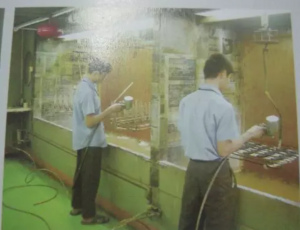
The primer and topcoat spraying equipment is used to spray the product surface before and after transfer. It consists of a body and an oil injection pressure device. The oil coating used for spraying will become finely floating under extremely high pressure. Particulate matter, when it encounters the product, forms an adsorption force.
04 Printing Technology
①Water coating transfer
Water drape transfer printing refers to decorating the entire surface of an object, covering the original face of the workpiece, and capable of pattern printing on the entire surface (three-dimensional) of the object.
Process flow
Film activation
Spread the water-coated transfer film flat on the water surface of the transfer water tank, with the graphic layer facing up, to keep the water in the tank clean and basically in a neutral state, spray evenly on the graphic surface with an activator to make the graphic The layer is activated and is easily separated from the carrier film. The activator is an organic mixed solvent dominated by aromatic hydrocarbons, which can quickly dissolve and destroy the polyvinyl alcohol, but will not damage the graphic layer, leaving the graphic in a free state.
Water coating transfer process
The article that needs water transfer is gradually approached to the water transfer film along its outline. The image and text layer will be slowly transferred to the surface of the product under the action of water pressure, due to the inherent adhesion of the ink layer and the printing material or special coating And produce adhesion. During the transfer process, the lamination speed of the substrate and the water-coated film should be kept even, so as to avoid film wrinkles and unsightly pictures and texts. In principle, it is necessary to ensure that the graphics and text are properly stretched to avoid overlapping, especially the joints. Too much overlap will give people a cluttered feeling. The more complex the product, the higher the requirements for operation.
Influencing factors
Water temperature
If the water temperature is too low, the solubility of the substrate film may decrease; if the water temperature is too high, it is easy to damage the graphics and text, causing the graphics and text to be deformed. The transfer water tank can adopt an automatic temperature control device to control the water temperature in a stable range. For large-scale workpieces with relatively simple and uniform shapes, special water transfer equipment can also be used instead of manual operations, such as cylindrical workpieces, which can be fixed on a rotating shaft and rotated on the surface of the film to transfer the image and text layer.
②Watermark printing
Watermark printing is a process that completely transfers the graphics and text on the transfer paper to the surface of the substrate. It is very similar to the thermal transfer process, except that the transfer pressure depends on water pressure, which is a popular water transfer technology recently.
crafting process
First cut the graphic water transfer paper that needs to be transferred to the required specifications, put it into a clean water tank, and soak for about 20 seconds to separate the mask from the substrate and prepare for the transfer.
Watermark transfer paper processing process: Take out the water transfer paper and gently close it to the surface of the substrate, scrape the graphic surface with a scraper to squeeze out the water, keep the graphic flat on the specified position, and dry it naturally. For peelable water mark transfer paper, dry it naturally and then dry it in an oven to improve the adhesion fastness of graphics and text. The drying temperature is 65-100 degrees. Because there is a layer of protective varnish on the surface of the peelable water mark transfer paper, there is no need to spray protection. However, there is no protective layer on the surface of the soluble water mark transfer paper. It needs to be sprayed with varnish after natural drying, and sprayed with UV varnish to be cured with a curing machine. When spraying varnish, you must pay attention to prevent dust from falling on the surface, otherwise the appearance of the product will be greatly affected. The control of the coating thickness is achieved by adjusting the viscosity of the varnish and the amount of spraying. Too much spraying can easily cause the uniformity to decrease. For substrates with a large transfer area, screen printing can be used for glazing to obtain a thicker coating, which is also a very effective protection measure.
05 Development prospects
①Applicable object
The market application of water transfer printing is to transfer the pattern to the surface of the substrate through a special carrier and use water as the medium. Therefore, the production process and material cost are higher than ordinary printing, and the production process is more complicated, but it is a more versatile one. Kind of printing method. This is not only because it can achieve printing effects that other printing processes cannot achieve, but more importantly, it has relatively low requirements on the shape of the substrate, whether it is flat, curved, edged or concave, etc., it can meet.
For example, the daily necessities and decorative materials used in ordinary households, etc., can break the restrictions of other special printing on the shape of the substrate (large, small, irregular, etc.). Therefore, its application range is very wide. From the perspective of substrate materials, water transfer printing is suitable for materials with smooth surfaces such as glass, ceramics, hardware, wood, plastic, leather, and marble. Water transfer printing does not require pressure and heating during the transfer process, so it is the preferred process for some ultra-thin materials that cannot withstand high temperature and pressure.
②The market prospect is unlimited. Although there are many problems in the water transfer printing market, its market potential is very huge.
With the continuous development of the economy, consumers have higher and higher requirements for product packaging, coating, and grades. For the printing industry, the concept of printing is no longer the traditional paper printing in people’s impression.
From daily necessities to office appliances, and even home decoration and the automotive industry, more, better, and more practical surface packaging are needed. Most of this kind of packaging is realized by transfer printing. Therefore, water transfer printing has a long way to go in the future, and the scope of application will become wider and wider, and the market prospects are unlimited.
In terms of market chaos, small scale, low technical content, poor quality, etc., to catch up with the international market level still requires the unremitting struggle of industry insiders.
Shanghai rainbow package Provide one-stop cosmetic packaging.If you like our products, you can contact us,
Website:
www.rainbow-pkg.com
Email: Bobby@rainbow-pkg.com
WhatsApp: +008613818823743
Post time: Jan-05-2022


